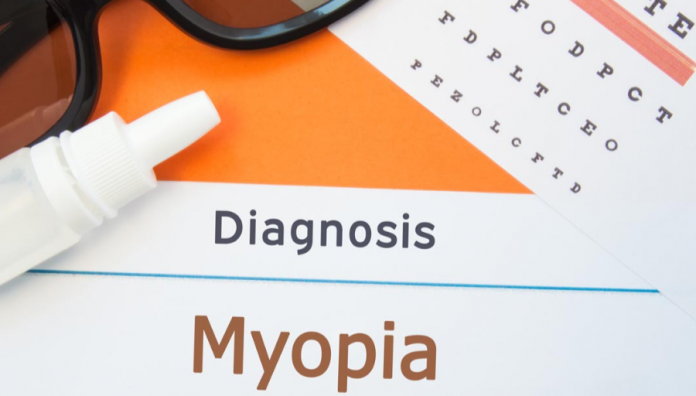Max Halford FBCO CL, Clinical Lead at Association of British Dispensing Opticians, turns our thoughts towards the “other” pandemic, myopia management
Short sightedness – technically called myopia – affects around three in 10 adults in the UK. It means that distant objects can appear blurry whilst close work generally remains unaffected. On the face of it, this doesn’t sound worrying. However, myopia can create long-term eye health problems, and a recent study estimated that myopia will affect the vision of nearly half the global population by 2050. In the UK, myopia is more than twice as prevalent in children than it was in the 1960s. This steady rise in the number of children becoming more myopic is of growing concern to eye care professionals, children and parents.
We know from research that the higher the level of myopia in a child, the higher the risk level of eye disease later in life, but why are more children becoming myopic than in the past?
Why more children are becoming myopic
The actual mechanics of myopia progression are well understood – in most cases the eye continues to grow in length beyond what is required for optimal vision. The eye is simply too long. The factors that actually cause this “axial growth” are less well understood, but include ethnicity – higher levels of myopia are seen in Asian countries and within Asian families; your parents – a person with one parent who is short-sighted has three times the risk of developing myopia, if both the parents are short-sighted this increases to six times the risk; and, most interestingly, what you are using your vision for. Research has shown that time spent outdoors can be beneficial in slowing both the onset and progression of myopia whilst close work, in particular, when things are held too close, can have a detrimental effect. Less than 90 minutes spent outdoors per day combined with more than three hours of non-school close work will increase the risk of myopia.
Your child’s prescription at an early age can also give an indication of the risk factor for myopic progression and I would always encourage parents to take their children for regular eye tests from a young age – they don’t need to be able to read to have a sight test, and the cost of the test is covered by the NHS.
The risks of eye health in later life
So, what are the risks of eye health in later life? The World Health Organization recognised the public health issues of myopia as long ago as 2016 and its report at the time states, “increases in the prevalence of myopia and high myopia worldwide are a serious public health concern”.(1) Cataract, retinal detachment, glaucoma and macula problems are all associated with higher degrees of myopia. For example, the risk of retinal detachment for a person with a -3.00D prescription is nine times higher than in someone with no prescription – a huge increase in risk factor, which increases still further to over 44 times more likely for patients with prescriptions over -7.00D.
Interventions are now available to control the increase in myopia in children. This is why myopia management and eyecare professionals worldwide are becoming increasingly proactive in recommending these options to patients and their parents.
Specialist contact lenses & spectacles
In the UK, specially designed spectacles lenses are now available to try and reduce the increase in axial length that causes the increase in in short sightedness. Specialist contact lenses designed to do the same thing are also available on every High Street – so how do they work?
It is believed that the trigger for the eye to continue growing beyond its optimal length is in the way rays of light entering the visual system are focused on the back of the eye. In myopia, these rays or images focus in front of the retina causing a blurred image. Spectacles or contact lenses for myopia help focus these rays of light directly onto the retina in the central area correcting the vision, however, in the peripheral areas of the eye the rays of light are focused on theory “behind” the retina. It is believed this is a stimulus for the eye to grow. Myopia control or myopia management spectacles lenses and contact lenses are designed with more than one point of focus and therefore diminish this stimulus for the eye to grow.
The final word on myopia progression
Other factors can influence myopia progression such as the way the eyes work together and an eye examination will include tests to see if this is a factor.
Myopia progression is at pandemic levels worldwide and will have serious implications for eye health going forward. Solutions are readily available at High Street Opticians across the UK. Call and ask to speak to the dispensing optician about myopia management and if it will benefit your child. And do remember to include regular eye tests as part of your family’s healthcare routine.
References








